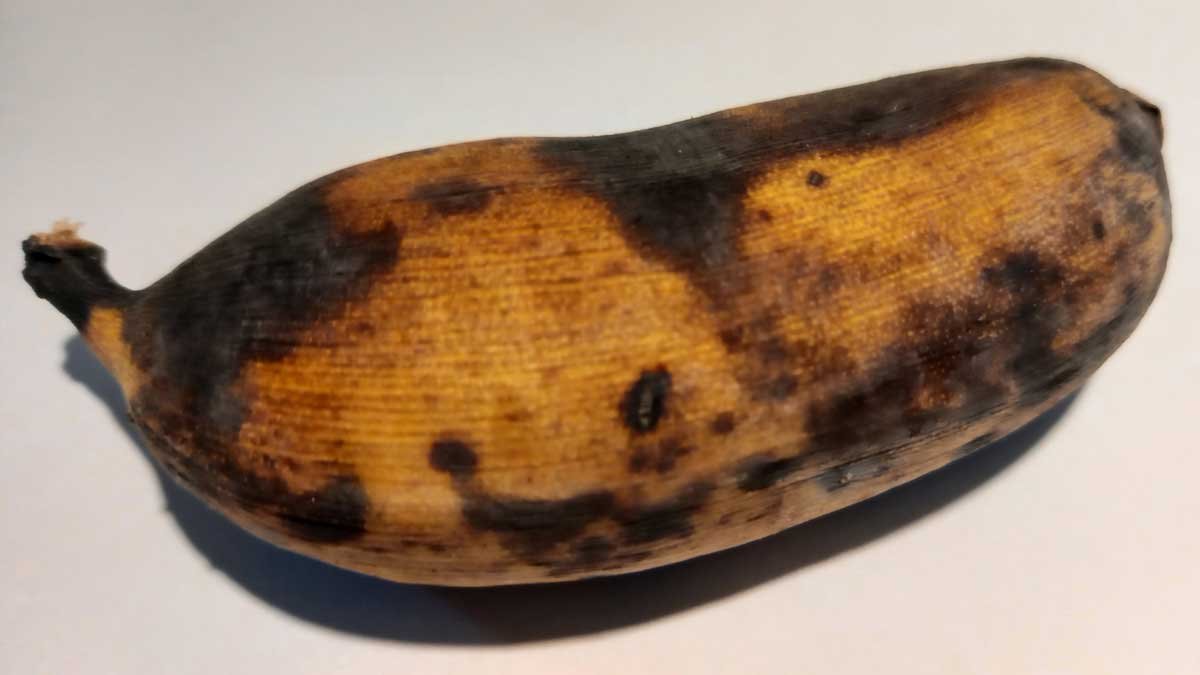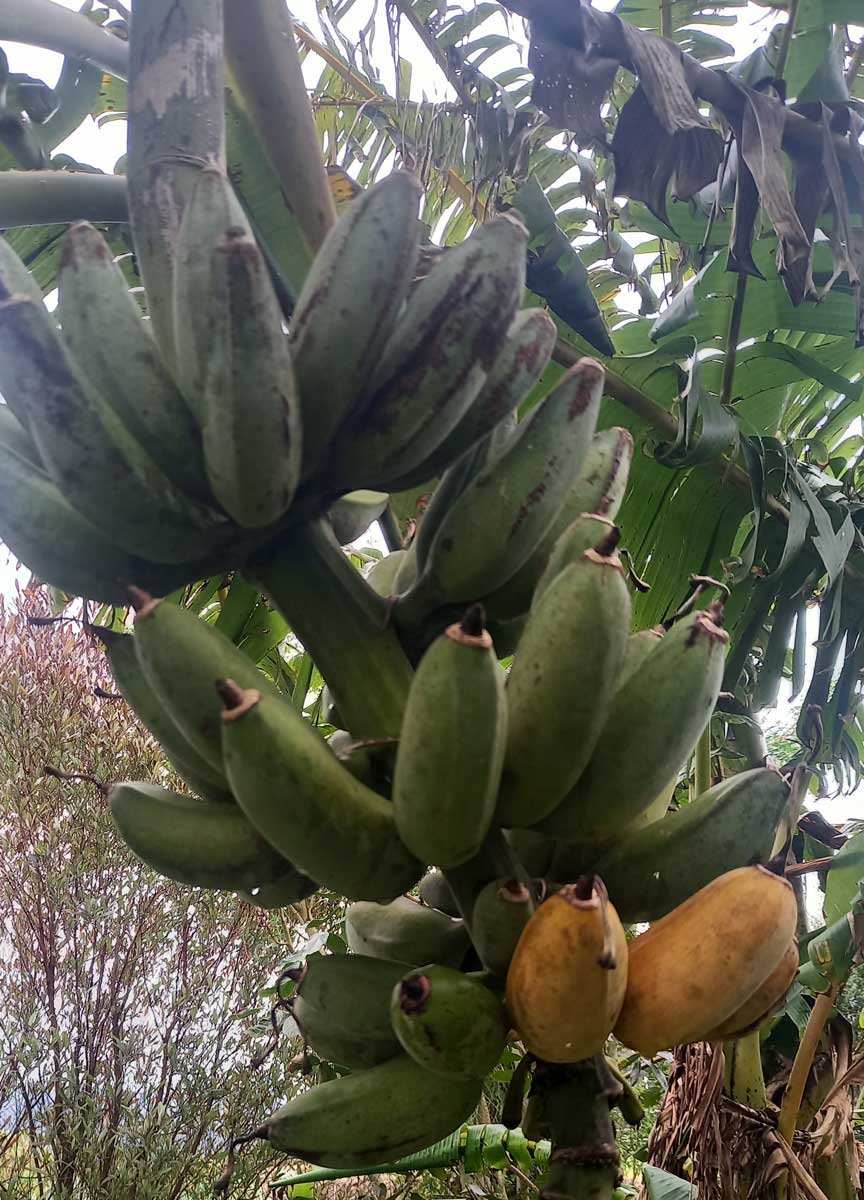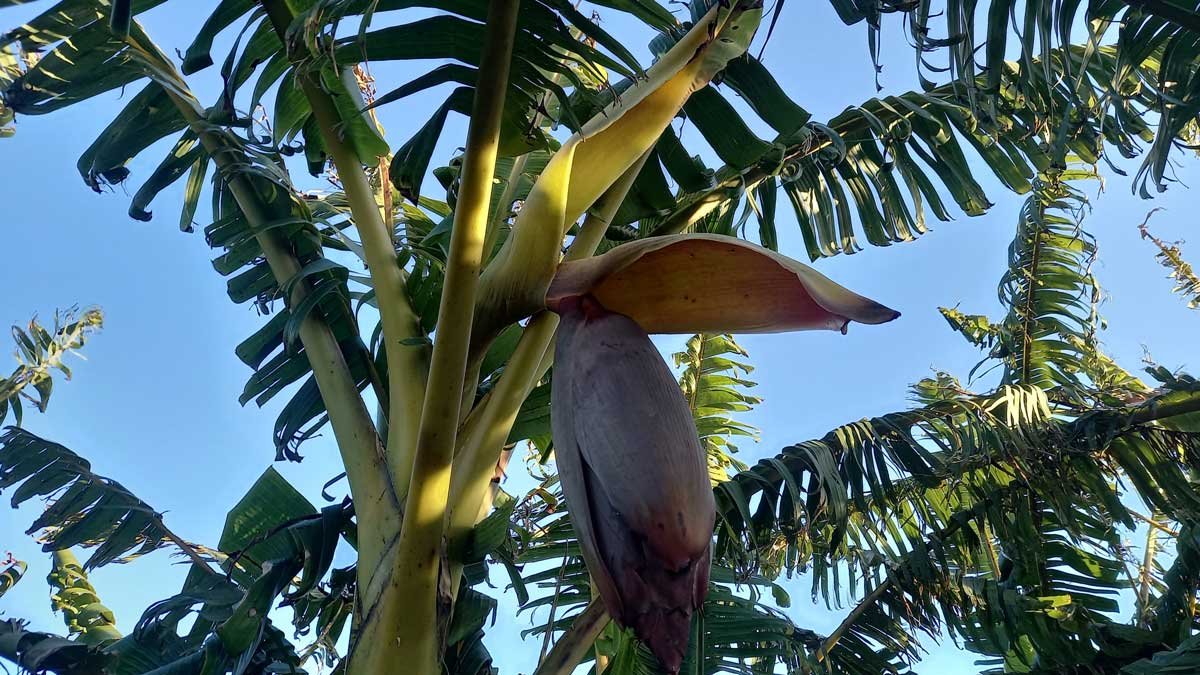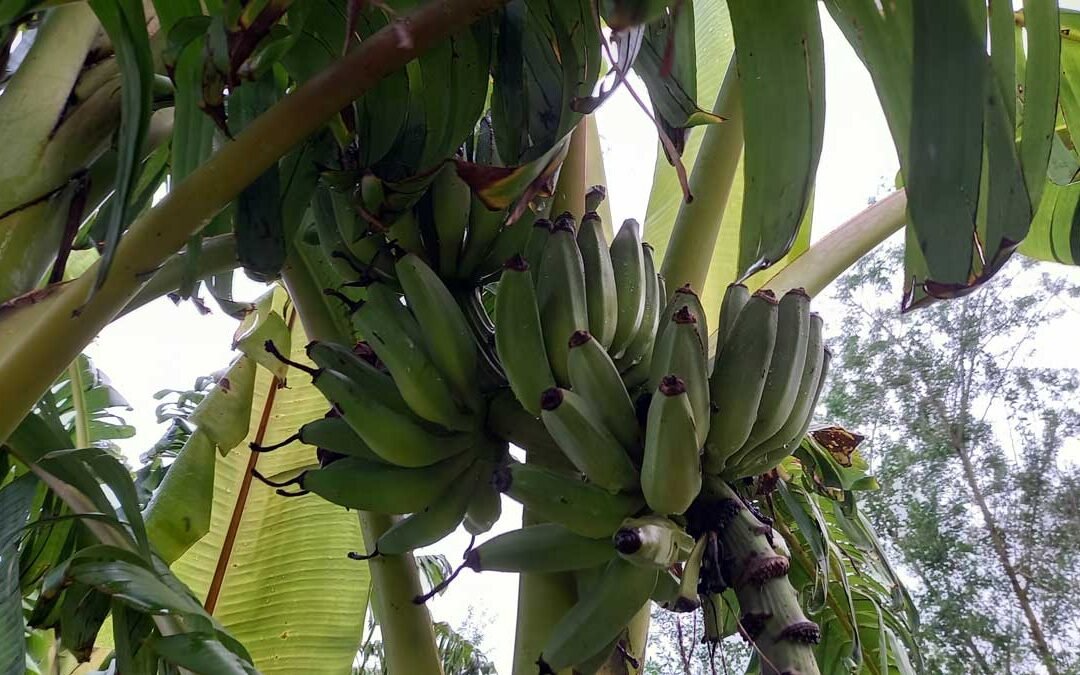One of the very earliest things we did after moving here was to plant some bananas.
I had some Misi Luki stems a friend had given me, and I picked up some additional Ladyfinger stems from Land of the Lotus via the Tropical Fruit Growers Association. We planted 6 stems initially, along with some tagasaste, which we hoped would provide some wind protection.
Since then, we’ve added more trees – a windbreak of natives, some inga beans, and a couple of Dwarf Cavendish bananas we were given. Everything has grown spectacularly.
Some of the tagasaste trees have completed their lifecycle. We’ve replaced them with natives. Then sometimes we’ve replaced those natives because Richard ran them over with the lawnmower.

Back in February, our first banana flower appeared. And just over a week ago, I got to harvest it.
We’re officially eating our own bananas!
Growing bananas
Bananas aren’t trees, or even palms. They are technically classified as herbs – the world’s largest herbs, actually.
There is a complicated and fascinating history associated with why you probably only know about one (maybe two) varieties of bananas. In supermarkets in 2023, we can buy the humble Cavendish pretty easily. But up until the 1950’s, if you came across a banana, it was probably a Gros Michel (known as ‘Big Mike’).
That was wiped out by a fungal pathogen and replaced with a resistant variety that is now considered a staple crop. New Zealanders are the biggest consumers of bananas in the world (per capita), we each eat around 18 kilograms every year!
But we’re eating a monoculture. Bananas are sterile, so each banana palm is a clone of it’s parent plant – there is no genetic diversity within a variety.
And the truth is, there’s a huge number of banana varieties. We grow three varieties of little bananas here at The Outpost – about 10cm long.
There’s also plantain – which are cooked, and often found in dishes from West and Central Africa, the Caribbean, Central America, and northern South America. There’s ornamental bananas, even blue and pink bananas!
Importing bananas
Our bananas are entirely spray-free. We’ve added some fertiliser, but we’ve never treated them for pests or disease. I think that would be true for most of New Zealand’s burgeoning banana industry.
But if you’re buying an imported banana, then it has definitely been treated for pests, and probably also disease. It’s picked green, and shipped green.
It arrives here from the tropics, and is sprayed with ethylene gas – a natural chemical that triggers ripening. Then it goes to the supermarket and you probably already know the story from here.
And look, the skins on a Cavandish banana are pretty thick. Much thicker than the skins on the bananas we’re now harvesting. But as Peter Chapman wrote in his book Bananas: How the United Fruit Company Shaped The World:
“Of the world’s major food crops, the banana is the most chemically treated – we trust a great deal, therefore, to the prophylactic powers of its skin.”
When you’re buying, eating, or growing a New Zealand-grown banana, you’re cutting a lot of bad things out of the system. Food miles, poor employment conditions, and a whole lot of chemicals designed to kill stuff are just the start.
Yes, but how do they taste?
That’s the real question huh? The bananas we’re eating now are the Ladyfingers.
They’re pretty similar in taste and smell to a banana you’re familiar with. We’ve found the blacker they get, the sweeter they are. But unlike a Cavendish, they stay firmer for longer.


So you get a sweet banana, with a fairly firm texture. It’s quite delightful to be honest.
They’re really ugly. But also delicious!
Bunches of bananas
Each stem holds 30-60 individual bananas. Once you see the first ones going yellow, you can whip them off the plant and bring them inside to hang.
You can pull them off the plant in ‘hands’ (large bunches). They’ll ripen by themselves faster inside while the ones on the plant stay green longer.
It gives you a longer ripening period. But it does leave you a little open to rats and possums finding your banana stash in the meantime.
I figure it’s better to share the bounty. We’ve sent them off to neighbours and taken them into work. They’ve taken years to establish, but now they’re going, they’re really pumping – we’re up to five banana flowers in our little plantation now!

So I’d rather promote the fact that yes, you can grow bananas in New Zealand. There are even a few varieties available through Exotica that are suitable for cooler climates.
More common varieties will start turning up for sale on TradeMe and Facebook groups in the next couple of months too.
If you have a sheltered, frost-free position, you can probably grow bananas in your backyard too. It might take a few years, but it’s possible.
Time marches on
When we planted the bananas, the main purpose was to breed them. I didn’t know if I’d keep bananas in that spot permanently, but I did know I wanted bananas producing somewhere. And I also thought that would take time, so I wanted to get started.
I still don’t really know where else I’d put them, or whether they’ll stay in this spot. But we have successfully bred our plants, and grown fruit. We’ve given stems away, and we’ll give away more this summer too.

The flowers have continued to pop out pretty consistently since February. 5 stems will slowly be ready for harvest over the next 6 months or so. Visitors in the coming summer will probably have bananas in their take-home boxes.
I’m not-so-quietly delighted each time any one of our trees “comes online” with fruit. I’m still waiting for pineapples, but the bananas have not disappointed at all.



Those banana flowers are amazing! I had no idea. So cool you can grow your own.
Happiness in a blackening skin.